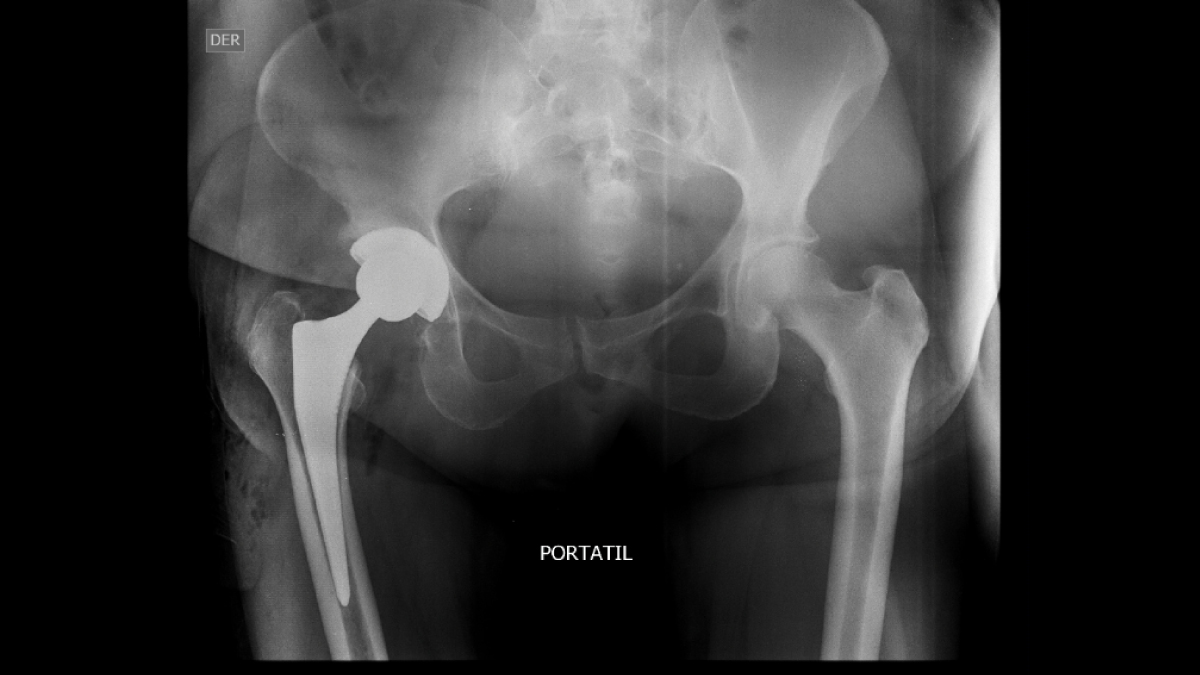Recent Posts
Powered by Damos Soluciones

Osteoarthritis is generally known in the population as "Osteoarthritis or degenerative joint disease", commonly referring to it as the wear and tear of mobile joints. In this pathology we find that the articular cartilage that functions as a shock-absorbing structure for the movement between the head of the femur and the acetabulum is irreversibly damaged or damaged, causing these two parts to lose the ability to move with each other, producing very strong pain and great difficulties in walking as well as other daily activities. Over time, symptoms get worse because the damage is progressive.
Causes:
It is a disease that occurs much more frequently from the age of 50, it is considered the result of both mechanical and biological events that destabilize the normal process of degradation and synthesis of articular chondrocytes as well as their extracecular matrix, with consequent damage to the surface of articular cartilage from different elements called cytokines, finally having an imbalance between anabolic and catabolic processes that is perpetuated over time. It is known that age, obesity, joint trauma, anatomical abnormalities such as dysplasia or femoroacetabular impingement, a history of repetitive movements or overuse due to work or sport can be or play a very important role in the development of Osteoarthritis of the hip.
Symptoms:
They usually develop over a long period of time rather than suddenly. One of the main symptoms is pain, which tends to increase over time, especially if proper treatment is not received. You may also begin to have difficulties in walking such as lameness when the weight is supported on the affected side, you may feel stiffness and great difficulty moving the hip.
¿Qué debo hacer?
Lo primero y más importante es un diagnóstico temprano, esto permitirá iniciar con un manejo ortopédico, no quirúrgico o quirúrgico de preservación articular, buscando mejorar la calidad de vida del paciente y retrasar su avance. Es muy importante aclarar que no existe una cura y eventualmente la mejor opción en los estados avanzados es un Reemplazo Total de Cadera.
Al consultar con un médico especialista, este pedirá una serie de imágenes diagnósticas que le permitirán establecer el grado de evolución en el que se encuentra la enfermedad. En un cartílago sano se podrá apreciar la preservación del espacio entre la Cabeza del Fémur y el Acétabulo, cuando el cartílago está dañado este espacio se disminuye o está ausente, acompañado de otras características en éstos estudios.
.jpg) Depending on the severity of the disease documented in the different examinations, the treating physician will determine the best way to proceed, each case is unique, that is why it is important to review not only the physical condition of the patient but also the lifestyle he leads. and the presence of other diseases. But there are some things that help improve pain like:
Depending on the severity of the disease documented in the different examinations, the treating physician will determine the best way to proceed, each case is unique, that is why it is important to review not only the physical condition of the patient but also the lifestyle he leads. and the presence of other diseases. But there are some things that help improve pain like:
Change in exercise routine:Running or competitive sports are high impact on the hips, it is important to change the exercise routine to sports such as cycling, swimming or walking on flat surfaces.
Losing weight: The extra kilos produce a large increase in the load on the hip, so it is possible that, if you are overweight, it is necessary to lose it to reduce wear and tear.
Orthopedic aids:The cane can be very helpful to reduce pressure or load on the affected side of the hip, so it is a good option if your doctor considers it.
 Management: If an early diagnosis is achieved, it is possible to improve the quality of life and decrease the pain in the joint. It is mainly done through physiotherapeutic work where the patient strengthens the muscles that provide stability to the hips and learns to carry out their day-to-day activities in an appropriate way for their condition. Medications such as non-steroidal anti-inflammatory drugs, acetaminophen, and dietary supplements are also likely to be necessary to make the disease more bearable. It is not as recommended or frequently used, as it is in the knee joint, the use of infiltrations with Corticosteroids or Hyaluronic Acid (Viscosupplementation).
Management: If an early diagnosis is achieved, it is possible to improve the quality of life and decrease the pain in the joint. It is mainly done through physiotherapeutic work where the patient strengthens the muscles that provide stability to the hips and learns to carry out their day-to-day activities in an appropriate way for their condition. Medications such as non-steroidal anti-inflammatory drugs, acetaminophen, and dietary supplements are also likely to be necessary to make the disease more bearable. It is not as recommended or frequently used, as it is in the knee joint, the use of infiltrations with Corticosteroids or Hyaluronic Acid (Viscosupplementation).
In selected cases in which an anatomical alteration such as Hip Dysplasia or Femoroacetabular Impingement has been documented, and depending on the severity of the Osteoarthritis, a joint preservation procedure such as Osteotomy or Hip Arthroscopy will be indicated.
When Osteoarthritis has advanced to such a point that it severely compromises the patient's quality of life, it is necessary to opt for a reconstructive surgical option such as Total Hip Replacement. It all depends on the patient, his medical condition and the therapeutic decision of the treating physician.